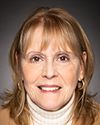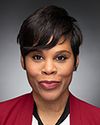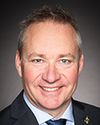Thank you, Mr. Chair and committee members.
I would just like to mention that my colleague Emmanuelle is having some connection difficulties, so I'll be speaking on her behalf to begin the remarks.
Dear members of the Standing Committee on Canadian Heritage. I'm pleased to be appearing before you today.
Recognizing that I'm speaking on my colleague's behalf, I would like to acknowledge that today I'm speaking to you from the Treaty No. 7 territory of the Stoney Nakoda and Blackfoot Confederacy, as well as Métis region 3 in Alberta.
I'm here to give you information on funding provided by the Department of Canadian Heritage for activities related to the commemoration of the history and legacy of residential schools.
First, I would like to acknowledge the committee's support in making the National Day for Truth and Reconciliation a reality. This year, on September 30, we will mark the first anniversary of this important day that will help ensure that the tragic history and legacy of residential schools are not forgotten and remain a vital component of the reconciliation process.
In 2019, the federal budget provided $7 million over two years for projects to raise awareness of the history and legacy of residential schools and to honour survivors, families and communities. The department developed a two-year strategy. The first year we funded large-scale national initiatives that have an educational and legacy component. The second year was for community-based projects suited to meet specific needs, histories and realities.
This funding provided grants and contributions to eligible recipients for initiatives that helped raise awareness regarding the history and legacy of residential schools and for activities that enabled communities to recognize, commemorate and honour survivors, their families and communities. Interest in this special initiative was remarkable with over 350 applications totalling $14 million in requested funding, despite the challenges caused by the pandemic.
Between 2019 and 2021, several national events and 203 community projects were funded. Examples of eligible projects include: healing gardens, ceremonies, healing workshops, elder presentations, speaker series, commemorative plaques and monuments, educational and awareness material, and cultural and artistic initiatives.
These numbers show the interest and need for these types of commemorative activities and funding to support them.
I'm happy to report that budget 2021 made the funding announced in budget 2019 permanent, with $13.4 million over the next five years and $2.4 million in ongoing support. The department will be engaging indigenous groups, survivor organizations and communities to determine how best to allocate funds. It is critical to engage to ensure this funding best meets the needs of indigenous communities and that we adhere to the principle of “nothing about us without us”.
In parallel with this national engagement, the department will collaborate with national organizations for large‑scale commemorative events in 2021 that will continue to raise awareness regarding the history and legacy that I talked about earlier.
To speak specifically on the paths to healing project, I have some points of clarification.
The Tk’emlúps te Secwépemc received a $40,000 grant for a project they called “paths to healing”. This was in the context of the funding I mentioned previously that was announced in 2019.
The objective of the program was to commemorate the history and legacy of residential schools and to honour survivors, their families and communities. The project submitted by the community was in fact for the creation of a permanent memorial site and included improvements such as benches, plants, gardens and paths within the existing heritage park. It also included commemorative events centred around Orange Shirt Day.
The use of the ground-penetrating radar technology was one of the measures taken as part of the development of this initiative. In effect, one can say that the Canadian Heritage funding contributed to the identification of the remains. However, this find was not the original intended specific purpose of the project.
Other federal departments, such as Crown‑Indigenous Relations and Northern Affairs Canada, have their own initiatives that address certain calls to action of the Truth and Reconciliation Commission of Canada. These initiatives relate to their specific mandates.
In the specific case of missing children and burials, the Department of Crown‑Indigenous Relations and Northern Affairs Canada is the lead for calls to action 74 to 76.
This concludes my opening remarks.
Thank you.








